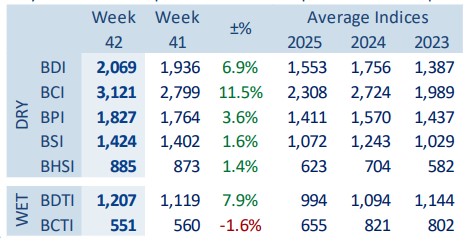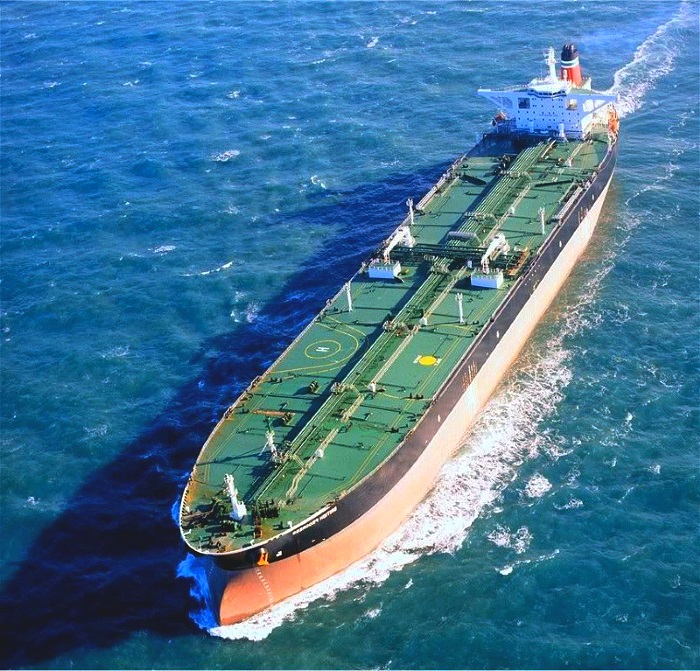The seaborne crude oil trade routes are constantly evolving and China is at the center of things. In its latest report, shipbroker Xclusiv said that “analysing trade flow data from Signal Ocean Platform, it is noted that year to date, China imported approximately 362.2 million tonnes of crude oil, excluding volumes from countries under international sanctions such as Venezuela, Russia, and Iran. The figures underscore a continued recovery in Chinese crude demand, supported by resilient industrial activity and robust refining margins. Saudi Arabia retained its position as China’s leading crude supplier, contributing 16.6% of total imports, followed by Iraq (13.9%) and Brazil (9.8%). The diversification of supply sources highlights China’s strategic effort to balance its import mix between the Middle East and emerging producers in Latin America. For comparison, during the same period in 2024, China imported 335.5 million tonnes of crude—an 8% year-on-year increase in 2025”.
According to the shipbroker, “Saudi Arabia also led supplies last year with a 17.1% share, trailed by Iraq (14.6%) and Oman (8.6%). The slight decline in Saudi Arabia’s market share this year reflects intensifying competition among key exporters and a gradual shift in Chinese procurement toward Atlantic Basin barrels. In terms of seaborne logistics, VLCCs continued to dominate China’s crude inflows in 2025, transporting 91% of total seaborne volumes. Aframax and Suezmax vessels followed with 6.1% and 2.2%, respectively. This structure underscores China’s ongoing reliance on long-haul shipments from the Middle East and the continued efficiency of the VLCC segment in meeting large-scale refinery demand. The pattern remains broadly consistent with 2024, when VLCCs carried 92.4% of total imports and Aframax vessels 3.5%”.

Source: Xclusiv Shipbrokers
Xclusiv said that “the marginal change in vessel distribution suggests stable trade routes and chartering preferences, reflecting China’s long-term commitment to secure crude supply chains through large-capacity tonnage. A major development affecting market sentiment emerged when China announced the imposition of port fees on vessels linked to the United States. The new policy targets ships owned by U.S.-listed companies, flying the U.S. flag, built in the United States, or owned or managed by U.S. persons or entities. Preliminary analysis indicates that the tanker market holds the highest exposure to these measures, compared to other shipping segments such as dry bulk, container, and gas carriers. This is primarily due to the significant proportion of tankers owned by U.S.-listed operators, estimated at around 12% of the global tanker fleet. However, China subsequently clarified that China-built vessels owned by U.S.-listed companies will be exempt from the new port fees. Accounting for this exemption, the share of tankers potentially subject to the fees declines from 12% to approximately 9%. Within the crude sector specifically, U.S.-listed companies own around 13% of the global VLCC fleet, 20% of Suezmaxes, and 11% of Aframaxes”.

Meanwhile, “further analysis reveals that 82.7% of these VLCCs, 80% of Suezmaxes, and 60% of Aframaxes owned by US-listed companies, may still be exposed to the fees, as they are non-China-built vessels. In total fleet terms, this translates to 10.6% of active VLCCs, 16.3% of Suezmaxes, and 6.5% of Aframaxes likely facing the new cost burden. If these crude carriers ultimately fall within the scope of China’s new port fees, the impact on seaborne trade may be meaningful. Additional costs would likely discourage U.S.-linked vessels from calling Chinese ports, forcing a reshuffle in loading and discharge patterns, tightening Pacific tonnage availability, extending voyage distances as ships reposition, and lifting tonne-mile demand and freight volatility. Overall, while the immediate financial impact of these port fees remains to be fully quantified, the measure underscores China’s growing use of maritime regulation as a strategic lever in international trade relations. The tanker market’s relatively high exposure suggests potential implications for freight rates, asset values, and future fleet investment strategies among U.S.-listed owners”, Xclusiv concluded.
Nikos Roussanoglou, Hellenic Shipping News Worldwide
Images are for reference only.Images and contents gathered automatic from google or 3rd party sources.All rights on the images and contents are with their legal original owners.
